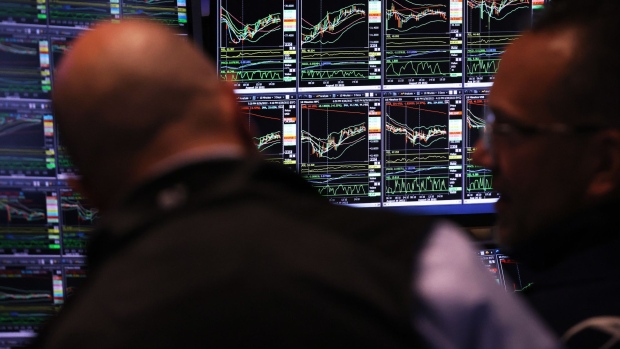Jan 18, 2023
Regional Banks Drop as Uncertainty, Inverted Yield Curve Dim Outlook
, Bloomberg News

(Bloomberg) -- Regional bank stocks fell Wednesday as economic uncertainty and an inverted yield curve weighed on the outlook for margins.
The KBW Regional Bank Index fell 3.8%, with all members in the red. The broader KBW Bank Index dropped 2.6%. PNC Financial, which reported earnings earlier in the day, was the second-worst performer in the S&P 500. Shares closed 6% lower after the company missed fourth-quarter earnings estimates and forecast a 1-2% quarter-over-quarter decline in first-quarter net interest income.
Aggressive Federal Reserve interest-rate increases have dimmed the outlook for economic activity and pushed shorter-term yields up above longer-term ones, putting pressure on the outlook for earnings at regional banks.
“Broadly, PNC and peers are dealing with a lot of uncertainty with respect to the operating environment for 2023, which is the reason why banks like PNC, First Republic and Citizens have offered some disappointing guidance thus far in the earnings season,” said Bloomberg Intelligence Senior Analyst Herman Chan. “Factors like the inverted yield curve and narrow credit spreads are headwinds.”
Other regional banks, like First Republic Bank and Citizens Financial, reported net interest income and margins roughly in line with expectations, though they saw weakness ahead.
First Republic cut its full-year net interest margin outlook by 15 basis points when it reported last week, citing pressures from rapid rate increases and the inverted yield curve. Citizens Financial on Tuesday forecast a 2% quarter-over-quarter decline in net interest income.
A slate of regional banks are scheduled to report later this week, including M&T Bank, Truist, State Street, Fifth Third, Huntington Bancshares and Northern Trust. The banks, which have benefited from rising rates, are expected to see year-over-year increases in fourth-quarter net interest income, but analysts will be watching to see how rising funding costs could affect upcoming quarters.
“Deposit costs are rising at a quicker pace at this stage of the rising-rate cycle,” Chan said. “The level of deposits are expected to decline, reflecting the Fed’s quantitative tightening, which is spurring banks to resort to more higher-cost funding.”
©2023 Bloomberg L.P.






